With stopwatch in hand, our perception of time seems straightforward. But in everyday life we’re not always watching the clock, and everyone knows that the passage of time is relative. It differs from one person to another and especially from one activity to another: An hour spent watching a great movie doesn’t feel as long as an hour in traffic.
With stopwatch in hand, our perception of time seems straightforward. But in everyday life we’re not always watching the clock, and everyone knows that the passage of time is relative. It differs from one person to another and especially from one activity to another: An hour spent watching a great movie doesn’t feel as long as an hour in traffic.
|
|
Scientists may conceive time in seconds, but most musicians feel it in a more fluctuating manner: either in the speeding up of a tempo or the slightly off-pitch note due to stress. In fact, pitch, which is defined by frequency, is a value linked to time and depends on our perception of a second. If it seems longer or shorter, the note can seem sharp or flat.
It’s said that during the middle ages, long before the invention of the metronome in 1816, a person’s pulse was used as the reference. It was therefore better to choose a musician who was calm.
|
|
An Experiment
For those of you who can remember magnetic tape, a piano note played in reverse doesn’t sound at all like a piano, and a verse of Shakespeare in reverse sounds strangely like…Swedish. In fact, what our ears perceive as a single homogenous sound is really like a small train made up of four different cars: if we watch it as it moves forwards or backwards, the order of arrival won’t be the same and therefore our perception of the sound will be different.
It’s this idea that’s expressed through the notion of the A.D.S.R curve, also called envelope curve. A « reverse » preset found on some reverbs manipulates nothing but the reverb envelope. It will probably be a decreasing sound and look like figure 1. If it’s played in reverse, the end will therefore be played before the beginning (figure 1b).
A.D.
For a sound to take place, you need two agents::
-
An exciter: it brings in energy
-
The excited element: that which receives the energy and starts to vibrate, creating the sound wave
For example, in the case of a violin, the exciter is the bow, the excited element is the string. For a drum, the exciter is the drumstick, and the excited element is the skin. Each phase of the A.D.S.R. will measure the rapport time/energy of each of the four phases.
|
|
A for Attack
The Attack is the transfer time of the energy as it passes from the exciter to the excited element. The importance of the Attack is fundamental for all instruments especially percussion. In the case of a piano (a little particular), a big part of the instrument’s timbral identity is determined precisely by the type of attack, in other words, by the player’s technique. Wind players have also learned to develop tonguing techniques by using, as the name implies, their tongues which let them create percussive-like attacks. When recording a voice, sometimes you get a transitory that’s too loud, either because the vocalist sings too loud, or because when speaking, a speaker clips the mic by hitting the occlusive consonants (d t p). A compressor lets you limit the damage, but an anti-pop filter in front of the mic will more than likely fix the problem… The Kleenex in front of the mic myth, wasn’t always very effective, but we can do better now.
D for Decay
Decay could be defined as the time a signal takes to stabilize itself; we can represent it as being the difference between the initial energy of the attack and that used to maintain it. With an instrument with a non-sustained sound, in other words, without a sustain phase, the difference between decay and release isn’t necessarily noticeable…The last phases continue without us being able to perceive them (fig. 3).
S.R.
S for Sustain
It’s the period during which energy is maintained. There are two possibilities: that in which the sound is maintained like in figure 2 (for example, wind instruments where you have to continue blowing in order to keep the note), and a dying sound (a drum, once the skin is struck, the sound, will last as long as the energy accumulated by the skin holds)
The first category creates harmonic spectrums, the second, non harmonic spectrums. (see article on timbre).
|
|
R for Release
Once there’s no more energy coming in, the sound dies down until it extinguishes itself. For non-sustained signals, this phase just continues from the last phase. Release is rather complex. It starts, in theory, once the musician doesn’t have any more control over the signal and finishes when the energy producing the sound is completely exhausted. For a piano, the note continues to sound, once a key is released, if the sustain pedal is pressed and lets the strings vibrate naturally until they stop. Plus, in a certain way we have to consider the fact that the room also effects decay. The same instrument, played in a small room won’t sound the same, in terms of decay, as it would in a cathedral. The resulting trailing effect from a long release might sound nice for certain synthetic sounds, but is difficult to control during recording.
Synthesize an Envelope
There are two specific cases for manipulating ADSR. The first brings us to the synthesizer. The first analog models were designed to be able to adjust each section of a sound, in the image of acoustic instrument models. In a synthesizer, the envelope filter (or EG, for envelope generator) controls a VCA (Voltage Controlled Filter) and subjects the control of the sound level to the ADSR settings. This means, the oscillator produces a constant power signal that will be routed towards a VCA which will receive its instructions from the ADSR settings: the VCA gets modified in regards to the current that powers it. This is delivered by the ADSR. The envelope in fig. 2 would correspond to someone progressively turning up the volume knob of an amp from zero to the chosen level (A), then reducing it quickly (D) until a second stable level (S), then progressively decreasing until zero (R ).If you think about it, ADSR controls let us adjust the time it takes to go from A to D, then from D to S and finally, from R to zero, with the relative level of S (Sustain) coming from the difference between the end of the attack and the end of the decay.
|
|
A little bit of History
This approach was for a long time considered sufficient, even if a certain amount of approximation had to be admitted: in fact, the absolute levels of A,D, and R aren’t modified; only the relative levels defined by the level of Sustain. When the DX7 came out in the early 80s, there were finally 8 segment envelope generators that separated level from time (fig. 4). Even if such a system has brought new possibilities in terms of adjustment capabilities and sound creation, transitory recreation through simple filters is still unsatisfactory. The digitalization of samples (Roland D50) permitted the use of real sampled attacks with synthetic sounds. All manufacturers then used equivalent technologies on their instruments. These days, physical modeling lets us recreate an instrument’s original envelope and its interaction with the created sound, but ADSR parameters are still present to allow adjustment of the dynamic envelopes of the sounds.
Compression
The second case in which a musician-technician might find themselves confronted with having to manipulate an envelope generator: a compressor. A compressor usually has envelope adjustments that change the action time of the compression effect (fig. 5)
Depending on the gear, you’ll usually find an Attack adjustment, which corresponds to the time the compression kicks in once the signal reaches the limit of compression. By putting this setting on slow, the compression will be much more discrete and lets you assure a certain amount of compression without it being too sensitive (for classical music for example). But on the other hand, all sudden peaks corresponding to short attacks will escape treatment. A short Attack adjustment will allow the compressor to react instantly, but that typical compressed « punchy » sound will be heard. In today’s music this can be a desired and interesting effect, if used with moderation. You can also modify the Release which adjusts the time it takes the compressor to bring the level back to its initial level. As with the attack settings, a middle setting will be more discrete and will be more delicate in bringing the level back down. The opposite, a release set to zero can, if the compressor intervenes often, give a disagreeable wave effect.
|
|
|
|

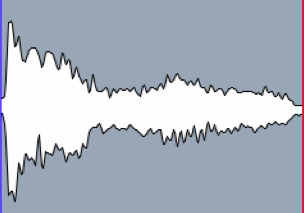 Fig.1a : Sound signal with reverb. Note the progressive attenuation of the sound level
Fig.1a : Sound signal with reverb. Note the progressive attenuation of the sound level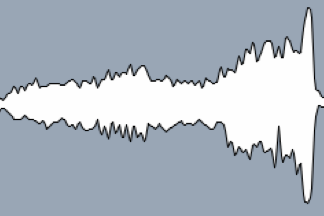 Fig.1b : The same signal, through a reverse effect Reverse : maximum gain is at the end of the signal
Fig.1b : The same signal, through a reverse effect Reverse : maximum gain is at the end of the signal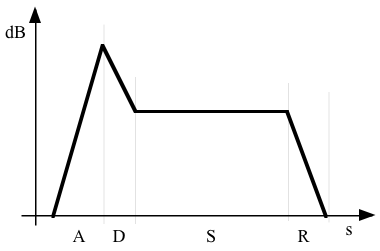 Fig. 2 : A.D.S.R. curve of a sustained signal
Fig. 2 : A.D.S.R. curve of a sustained signal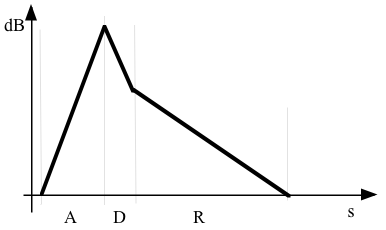 Fig. 3 : A.D.S.R. curve of a non-sustained signal
Fig. 3 : A.D.S.R. curve of a non-sustained signal Fig. 4 : The Yamaha
Fig. 4 : The Yamaha 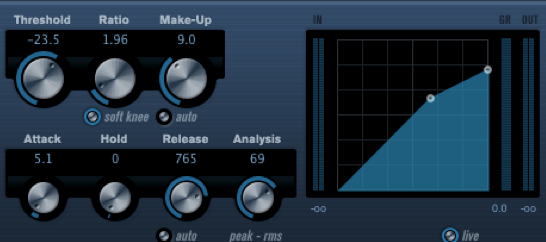 Fig 5a: Cubase’s standard compressor
Fig 5a: Cubase’s standard compressor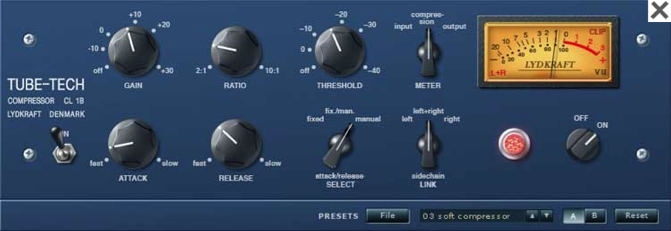 Fig 5b: TC Electronics TC
Fig 5b: TC Electronics TC